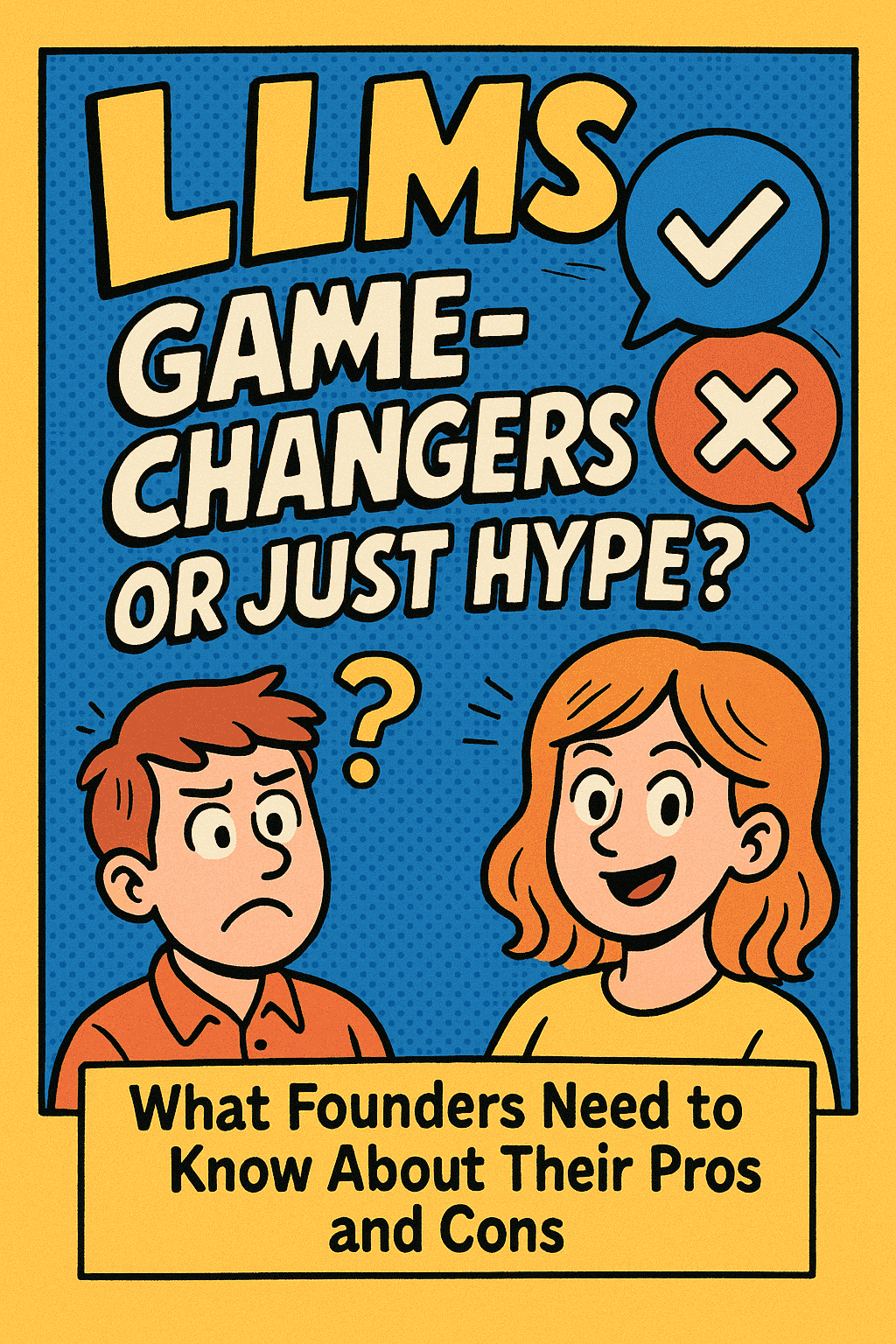Saw a tweet yesterday that said LLMs are boring. Why don’t we talk about it?
Large Language Models (LLMs) have fundamentally transformed how we handle language-based tasks across many industries. But beyond the hype, founders must ask: are LLMs truly delivering real value, or are they just another overplayed trend?
The Real Strengths of LLMs
Today, 67% of organizations worldwide have integrated LLMs into their operations, harnessing generative AI to automate tasks like content creation, customer support, sentiment analysis, and fraud detection. This shift is freeing teams to focus on strategic challenges rather than repetitive busywork. The market is booming: LLM-powered applications are expected to reach 750 million globally in 2025, supporting everything from chatbots to virtual assistants.
LLMs also handle massive volumes of data with low latency and support long conversation contexts far better than earlier AI tools. This level of scalability and efficiency is critical for companies wanting real-time, personalized customer engagement at scale — without ballooning headcount.
Customization is another major plus. Fine-tuning models on domain-specific data is increasingly common, allowing businesses to create tailored solutions in verticals like legal, medical, or technical fields. Multilingual support is also mainstream now, removing language barriers for global expansion and making product rollouts smoother and less risky.
The Limitations Behind the Hype
LLMs don’t yet “get” language the way humans do; their outputs are sophisticated remixing of learned patterns. This often leads to bland or repetitive results, feeding the perception that LLMs are “boring” or creatively barren.
They are prone to hallucinations — confidently generating false or fabricated information — which is especially risky when trust and accuracy are non-negotiable. About 35% of users cite output reliability as a significant concern. These models also tend to reflect biases in their training data, requiring careful oversight to avoid amplifying harmful stereotypes.
Another barrier is cost and complexity. Building and maintaining competitive LLM capabilities demands heavy investment in hardware and expert talent, limiting access primarily to well-funded players. This creates challenges for smaller teams aiming to innovate with LLMs. Moreover, despite improvements, LLMs still struggle with complex, niche subjects without dedicated fine-tuning.
When and Where LLMs Shine
The value of LLMs is context-dependent. They excel at automating scalable and fluent language tasks like customer interactions, data synthesis, and routine content — enabling businesses to operate more efficiently and respond instantly across multiple channels.
However, for tasks that require deep reasoning, nuanced judgment, or breakthrough creativity, LLMs often fall short. This leaves a gap in use cases demanding originality or critical thinking — a gap that fuels user fatigue as generic, one-size-fits-all LLM tools saturate the market.
The Founder’s Challenge: Integration and Innovation
LLMs aren’t inherently boring — it’s how you use them that counts. Founders willing to get hands-on, layering in domain data, fine-tuning models, and rigorously overseeing output can unlock tremendous value. Verticalized solutions crafted with user needs at the core turn LLMs from generic engines into powerful multipliers capable of solving real problems and driving trust.
Further, the market investment illustrates confidence in the technology’s future. The global LLM market is expected to grow from about $5.7 billion in 2024 to over $123 billion by 2034, reflecting strong enterprise adoption and evolving use cases.
Final Thoughts: Boring Only If You Let Them Be
The debate about LLMs being boring overlooks their undeniable impact and potential. Their real power lies in how thoughtfully and creatively we wield them — combining human judgment with machine efficiency.
By marrying the strengths of LLMs with persistent innovation, rigorous ethical guardrails, and deep domain expertise, founders and builders can keep the technology fresh, relevant, and genuinely game-changing.
So yes, LLMs can be boring when used as black-box tools. But in the hands of those who innovate, refine, and integrate, they are anything but. The future belongs to those who move beyond the noise to build solutions that truly matter.






